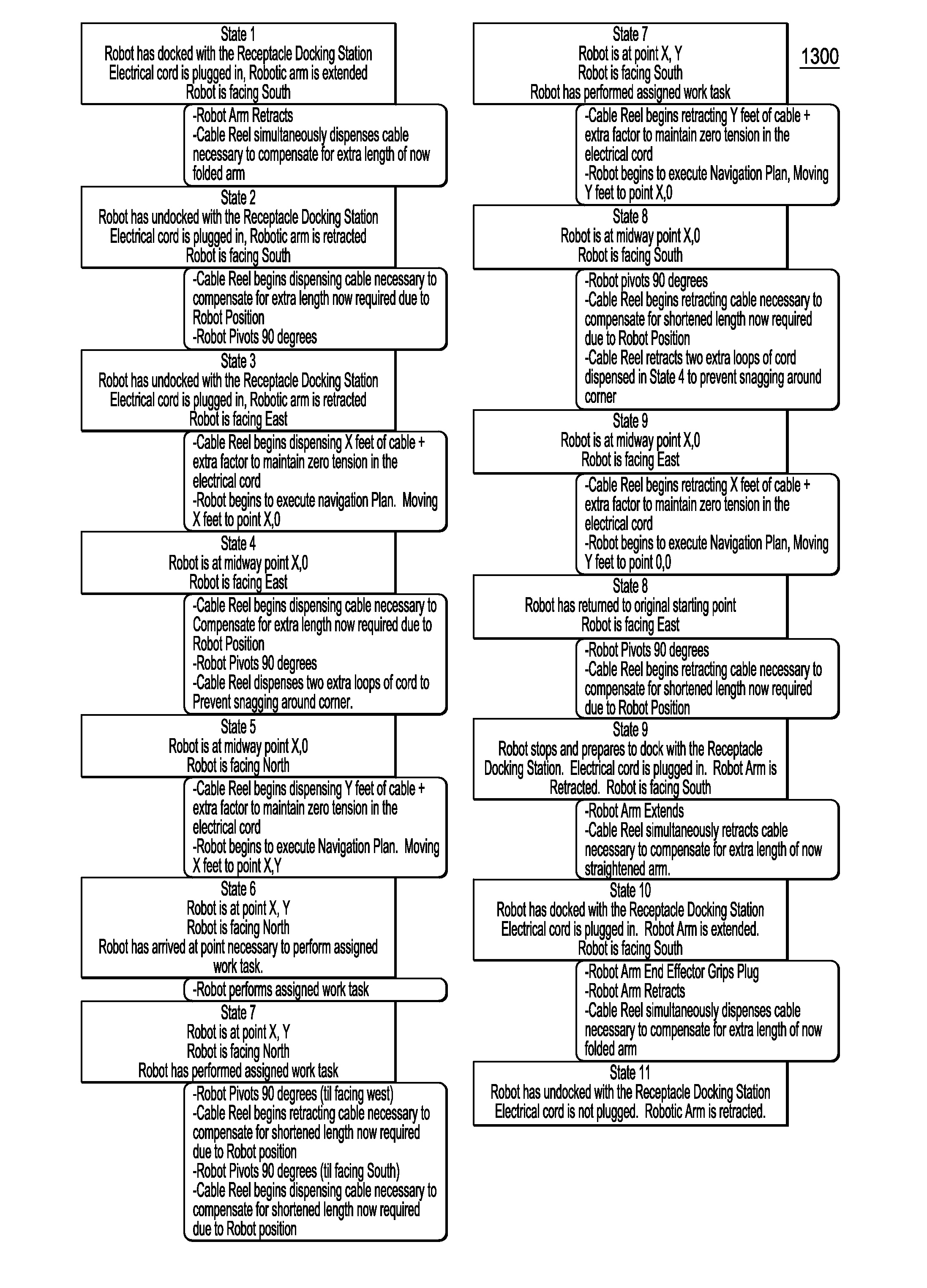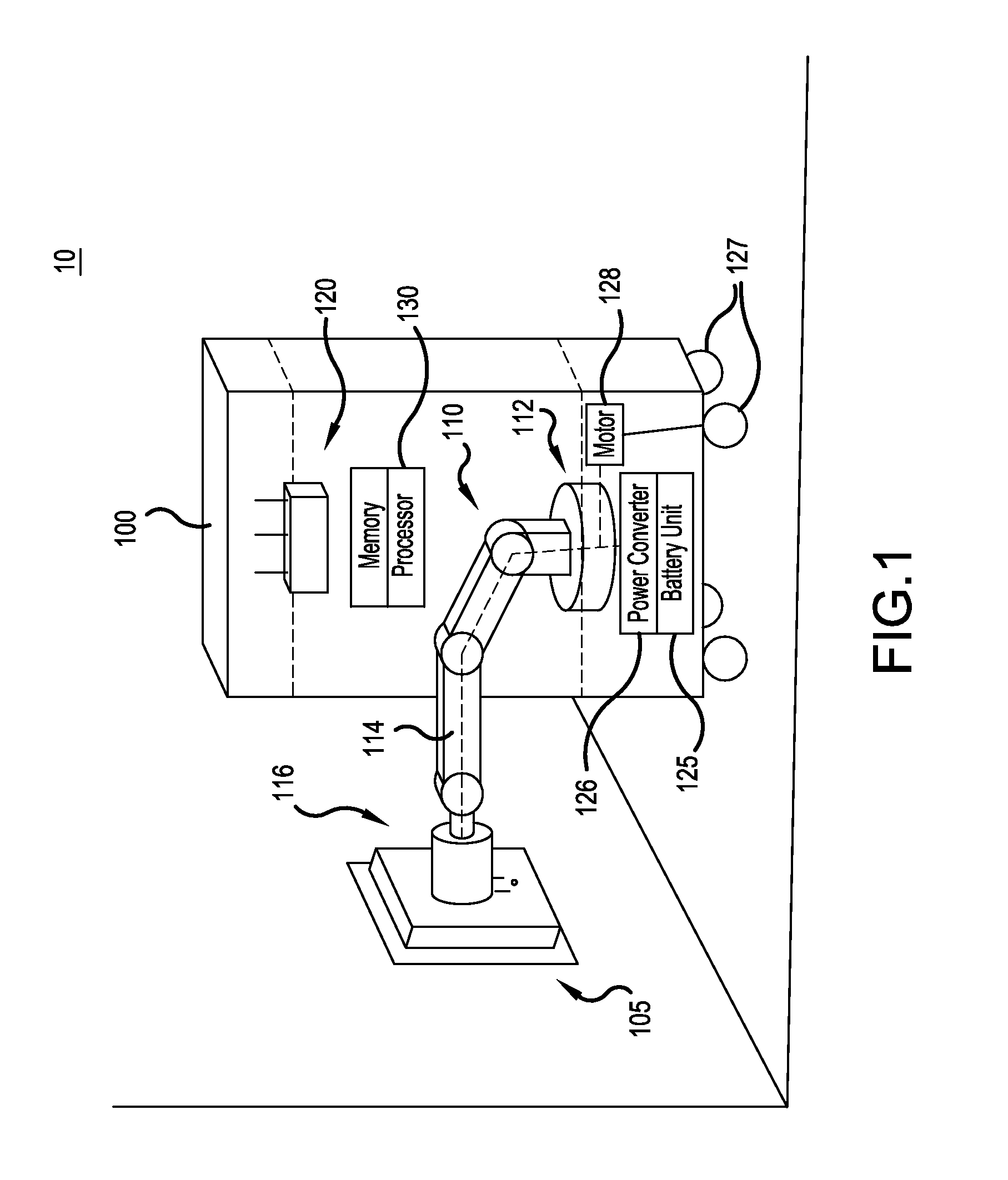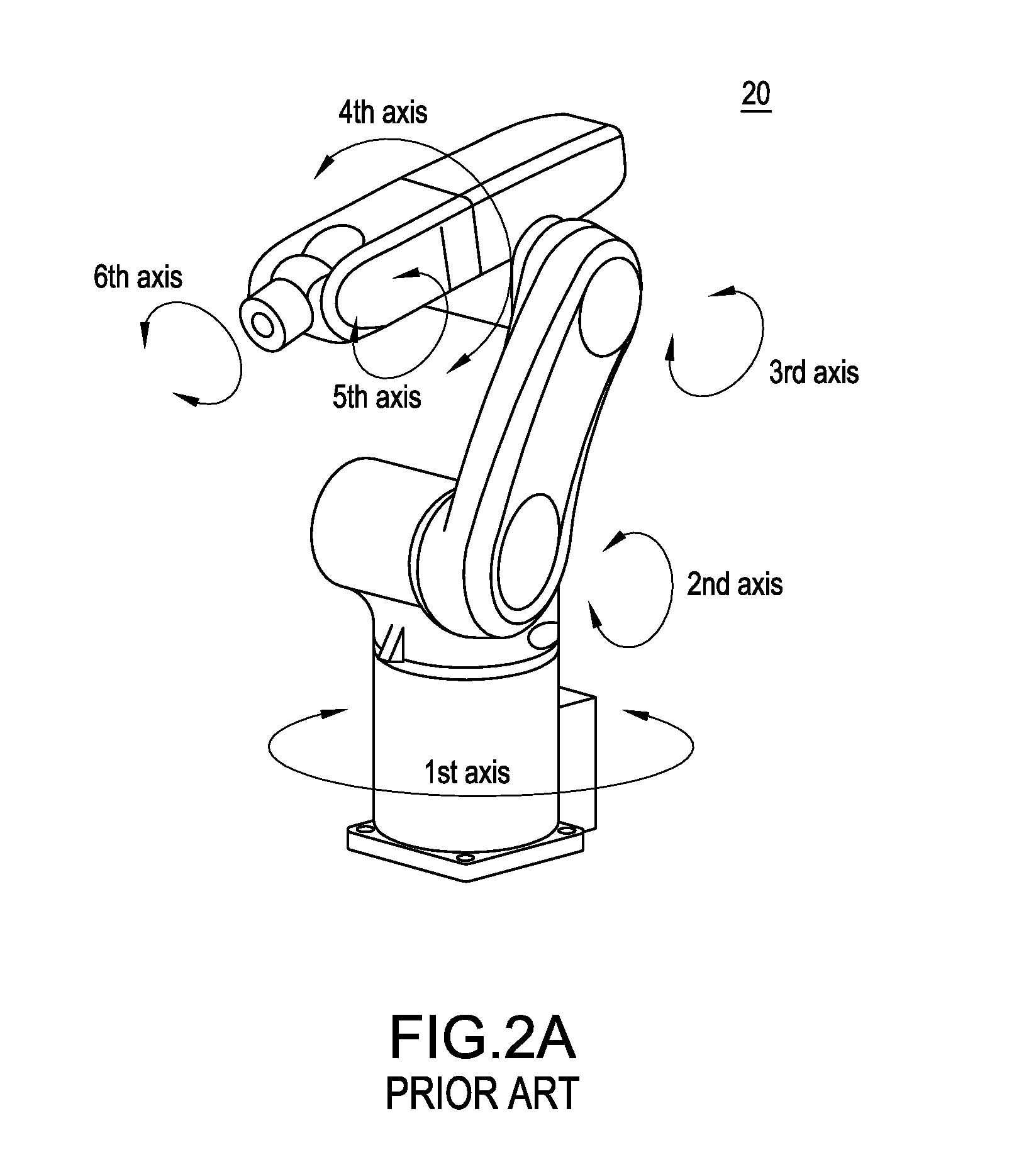Apparatus and method for providing tethered electrical power to autonomous mobile robots
a mobile robot and electrical power technology, applied in the field of autonomous mobile robots, can solve the problems of limiting the amount of work they are able to perform to the power storage and output capacity of the battery, the expense of the mobile robot is too large for them to be practically deployed in many environments, such as residential homes or narrow commercial hallways, and the size, weight, and expense of the mobile robot are too large to achieve the effect of reducing or defeating the operational advantages of autonomous operation
- Summary
- Abstract
- Description
- Claims
- Application Information
AI Technical Summary
Benefits of technology
Problems solved by technology
Method used
Image
Examples
Embodiment Construction
[0028]FIG. 1 illustrates an embodiment of a system 10 including a mobile robot 100 which is plugged into an electrical receptacle of an electrical receptacle docking station 105. In some embodiments, mobile robot 100 may comprise an autonomous mobile robot. Mobile robot 100 comprises a robot arm 110, a communications unit 120, a battery unit 125, a power converter 126, a plurality of wheels 127 driven by one or more motors 128, and a processor 130 with associated memory.
[0029]The one or more motors 128 may be provided for controlling the movement of mobile robot 100 via wheels 127. In some embodiments, one or more motors 128 may include an alternating current (AC) motor driven by electrical power received from an electrical receptacle (e.g., electrical receptacle docking station 105) via electrical power cord 114 and an electrical plug (not shown in FIG. 1, but see FIG. 3) attached to electrical power cord 114, for example without first being stored in battery unit 125. Although not...
PUM
 Login to View More
Login to View More Abstract
Description
Claims
Application Information
 Login to View More
Login to View More - R&D
- Intellectual Property
- Life Sciences
- Materials
- Tech Scout
- Unparalleled Data Quality
- Higher Quality Content
- 60% Fewer Hallucinations
Browse by: Latest US Patents, China's latest patents, Technical Efficacy Thesaurus, Application Domain, Technology Topic, Popular Technical Reports.
© 2025 PatSnap. All rights reserved.Legal|Privacy policy|Modern Slavery Act Transparency Statement|Sitemap|About US| Contact US: help@patsnap.com



